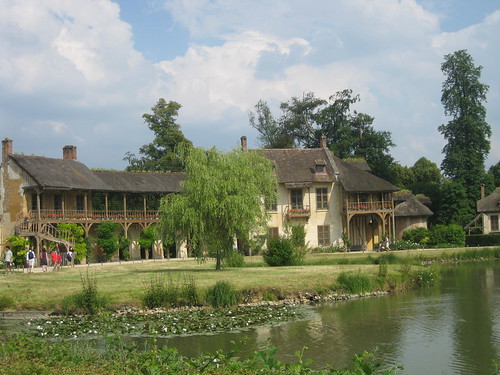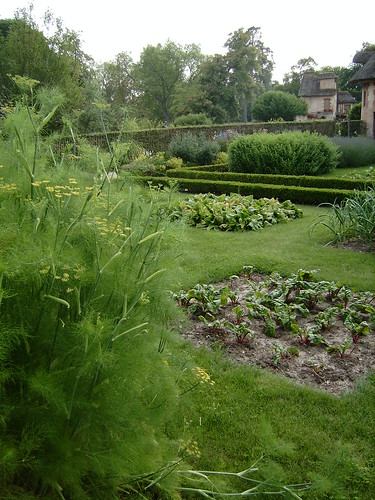When you are Louis 14, you abandon Paris for Versailles, make it the new capital of the country, build a massive Rococo palace entirely to your specifications. . . .
. . .and then you build another one to get away from Versailles.
Apparently, even Louis 14 got tired of the pomp and crush. So, he created his getaway at "Trianon." Formerly the site of the village of Trianon, Louis 14 created a second palace, which is only informal in comparison to Versailles. We didn't manage to see it, because one can only inhale so much of France in four days, but there is a great virtual tour here.
But when you are a King of France, is one get-away ever enough? Of course not--so Louis 15 built another little house for his mistress, Madame de Pompadour.

However, in classic French fashion, Pompadour died before the house was finished. Typical.
That was "Petit Trianon." Ultimately, Louis 16 gave it to his wife, and it is now inextricably linked to Marie-Antoinette. Frankly, I'd live here too.

Petit Trianon is the exact opposite of the overwhelming opulence of Versailles, and being there made Marie-Antoinette seem very understandable, as a young woman rather than as a queen. Knowing she loved Petit Trianon makes me think I would have liked her.

Petit Trianon is set off to one side from the enormous gardens of Versailles, about a half-hour's walk from the chateau. It's the perfect distance away for a golf cart ride (we took the little tram).
The house itself is small, only about eight rooms total, and they are all fairly small even by modern middle-class standards. Maybe 20' x 20', although they are taller than they are wide, so there is no sense that they are cramped. Not by any means.
We apparently didn't take many pictures of the building itself--mostly because the scale is both too small and too big. It's hard to get a picture that captures the scale of the room, because you can't stand far enough back to get a shot. At least I couldn't.
But really, the thing to love about Petit Trianon is outside.

Could the contrast be any greater? The rigid protocol and formality of Versailles, with its relentless obligation to live in the public's eye vs. this!
She also built a series of small playhouses, really, which I think acted as mini-farm buildings as well as guest houses for her closest companions--the Queen's Hamlet:

The Queen's House:

The mill:

The buildings are not open to the public, and apparently are in need of some serious restoration work, but you can wander round them, and the gardens are maintained, and on a lovely summer's day there is no way you would ever want to leave.

Marie-Antoinette was savaged in her time for being a spend-thrift, and Petit Trianon was one of the flashpoints for that anger. I have no way of knowing how much this cost, obviously, and in a France ravaged by crop failure, it is hard to be sympathetic to someone who already lives in an incredible palace "needing" something like this. Still, on a human, emotional, level, it's understandable.

There is a nearby farm which was apparently doing agricultural research into improving farming methods, and the Hamlet included some practical outbuildings for that work. And compared to the cost of even maintaining Versailles, this had to be just a drop in the bucket. I have read estimates that the cost of running Versailles in Louis 14's day cost up to 32% of all the government revenue of the time.
Marie-Antoinette was caught in the pincers of irreconcilable demands. Married to cement an alliance between traditional enemies France and Austria, she was suspected and disliked for her nationality and never accepted as "French." After a fairly casual upbringing, she was thrust into the demanding formality of a place that had operated on that protocol for over 100 years. Expected to live her life in public, she longed for private time--a wish that was interpreted as suspicious secrecy. What was she hiding?
She was too informal for the French aristocracy, and a symbol of royal excess to the common people. Versailles was opulent, and she was expected to live to its standards, while at the same time she was excoriated in the press for doing so. She was a convenient focus for an increasingly desperate population--she was Austrian--which allowed them to avoid blaming their own king.
Maybe she deserved some of the abuse that was heaped on her, although she was not to be blamed for the hysteria that escalated even after her death and turned the Revolution into the Terror.
Looking at where she prefered to spend her time--in the intimate and lovely settings of Petit Trianon--it is hard to hate her.


No comments:
Post a Comment